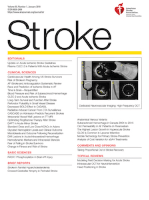
STROKE
Scope & Guideline
Elevating Standards in Neurology and Cardiology Research
Introduction
Aims and Scopes
- Epidemiology and Risk Factors:
The journal covers research on the epidemiological trends and risk factors associated with stroke, emphasizing the importance of understanding demographic disparities and the role of comorbidities. - Acute Treatment and Interventional Strategies:
It provides insights into acute treatment protocols, including the effectiveness of thrombolysis and endovascular thrombectomy, and explores new interventional strategies for improving outcomes. - Rehabilitation and Recovery:
Research on rehabilitation techniques post-stroke, including innovative approaches to physical and cognitive recovery, is a significant focus, highlighting the importance of multidisciplinary care. - Neuroprotection and Pathophysiology:
The journal includes studies on neuroprotective strategies and the underlying pathophysiological processes of stroke, aiming to identify potential therapeutic targets. - Patient-Centered Care and Quality of Life:
It addresses the psychosocial aspects of stroke recovery, emphasizing the need for patient-centered approaches and the impact of stroke on quality of life. - Technological Innovations:
The journal discusses advancements in technology, including telemedicine and digital health tools, aimed at enhancing stroke care delivery and patient monitoring. - Public Health and Policy Implications:
Research that informs public health strategies and policy initiatives to improve stroke prevention and management at community and national levels is also featured.
Trending and Emerging
- Artificial Intelligence and Machine Learning:
The integration of AI and machine learning techniques for stroke prediction, diagnosis, and treatment optimization is gaining momentum, indicating a trend towards data-driven decision-making. - Telehealth and Remote Monitoring:
The rise of telehealth services for stroke care, particularly in the context of the COVID-19 pandemic, demonstrates an emerging emphasis on remote patient management and accessibility. - Post-Stroke Cognitive Impairment:
An increase in research addressing cognitive impairment following stroke is evident, emphasizing the need for interventions that target both cognitive and physical recovery. - Multidisciplinary Rehabilitation Approaches:
There is a trend towards collaborative rehabilitation efforts that involve various healthcare professionals to address the diverse needs of stroke survivors effectively. - Health Disparities and Social Determinants:
Research focusing on health disparities and the impact of social determinants on stroke outcomes is emerging, highlighting the importance of addressing inequities in stroke care. - Novel Therapeutic Approaches:
Emerging studies exploring innovative therapeutic interventions, including pharmacological and non-pharmacological strategies for stroke recovery, are becoming more prevalent. - Patient Engagement and Self-Management:
There is a growing emphasis on patient engagement strategies and self-management interventions, reflecting a shift towards empowering stroke survivors in their recovery journey.
Declining or Waning
- Traditional Risk Factor Studies:
Research focusing solely on traditional risk factors such as hypertension and diabetes is becoming less prevalent, as newer studies emphasize multifactorial approaches and the integration of lifestyle and psychosocial factors. - Basic Laboratory Studies:
There is a noticeable decrease in basic laboratory studies that do not translate into clinical applications. The journal is favoring studies with clear clinical relevance and practical implications. - Historical Cohort Studies:
Cohort studies that lack contemporary relevance or fail to incorporate recent data analytics and methodologies are increasingly being overshadowed by more innovative and timely research approaches. - Single-Center Trials:
The focus on single-center trials is waning, with a shift towards multicenter collaborations that enhance the generalizability and applicability of findings across diverse patient populations.
Similar Journals

Brain Circulation
Enhancing Understanding of Cerebrovascular HealthBrain Circulation, published by Wolters Kluwer Medknow Publications, is a premier open-access journal dedicated to advancing knowledge and research in the field of neurovascular health and brain circulation. Since its inception in 2015, this journal has played a pivotal role in disseminating high-quality research articles, reviews, and case studies that explore the intricate relationship between cerebrovascular dynamics and neurological disorders. The journal is committed to fostering a collaborative environment for global researchers, healthcare professionals, and students, aiming to improve outcomes in neuroprotection and treatment strategies. Although it does not currently have an H-index listed, its focus on innovative research ensures its growing significance within the academic community. With a user-friendly open-access model, Brain Circulation invites contributions that enhance understanding and reshape practices in neurovascular care, making it an essential resource for those dedicated to unraveling the complexities of brain health.

Journal of Stroke & Cerebrovascular Diseases
Fostering Collaboration in Stroke Research and PracticeJournal of Stroke & Cerebrovascular Diseases, published by ELSEVIER, is a leading international peer-reviewed journal dedicated to advancing the research and understanding of stroke and cerebrovascular disorders. With an impressive impact factor reflective of its rigorous academic standards, this journal is indexed in the highest echelons of medical disciplines, boasting a Q1 classification in Rehabilitation and prominent rankings in related fields. Established in 1991 and converging its focus toward 2024, it serves as a vital resource for researchers and clinicians interested in the complexities and treatment of cerebrovascular conditions. The journal's broad scope spans essential categories such as cardiology, neurology, and surgery, making significant contributions that enhance clinical practices and patient outcomes. For researchers, professionals, and students alike, the Journal of Stroke & Cerebrovascular Diseases is not just a publication but a critical platform for sharing innovative findings and fostering impactful discussions within the medical community.

CEREBROVASCULAR DISEASES
Transforming research into improved patient outcomes.CEREBROVASCULAR DISEASES is a prestigious journal published by KARGER that focuses on the critical field of cerebrovascular health, encompassing research and advancements in cardiology and neurology. With a strong emphasis on high-quality, peer-reviewed publications, the journal has established itself as an essential resource since its inception in 1987, contributing to the understanding and management of cerebrovascular disorders. It holds a commendable Q2 ranking across various categories, including Cardiology and Cardiovascular Medicine, which underscores its influence within the research community. The journal is especially significant for professionals and researchers interested in the intersection of neurological and cardiovascular health, facilitating knowledge sharing and innovative research. Although it does not operate under an Open Access model, the journal is well-regarded for its rigorous selection criteria and impactful findings. By continuing to publish cutting-edge research, CEREBROVASCULAR DISEASES aims to foster advancements in treatment and prevention strategies for cerebrovascular diseases, thereby contributing to improved patient outcomes worldwide.

ONCOLOGY
Connecting researchers and clinicians in the fight against cancer.ONCOLOGY is a prestigious journal published by KARGER, dedicated to advancing the field of cancer research and treatment. Established in 1948, this peer-reviewed journal has established a significant presence in the medical community, reflected by its impressive impact factor and Q2 category rankings in both Cancer Research and Oncology as of 2023. With a focus on groundbreaking research and comprehensive reviews, ONCOLOGY serves as a crucial resource for researchers, clinicians, and students interested in the latest developments in the fight against cancer. Although it currently does not offer open access, the journal's reputation ensures that it reaches a wide audience in academia and clinical practice. Its commitment to excellence is underscored by its consistent rankings in key disciplines, making it a vital publication for anyone involved in cancer research, biology, or associated medical fields. The journal is headquartered in Basel, Switzerland, positioning it at the heart of European medical research.
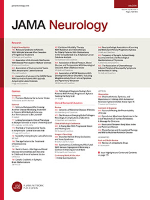
JAMA Neurology
Transforming Understanding of Neurology through Open AccessJAMA Neurology is a leading peer-reviewed journal published by the American Medical Association, focused on advancing the understanding and treatment of neurological disorders. With an impressive impact factor and ranked in the 99th percentile among clinical neurology journals, this publication is recognized as Q1 in its category for 2023, highlighting its significance in the field. Since its inception, the journal has provided a platform for high-quality research, clinical trials, and reviews that inform both clinicians and researchers. Operating from its headquarters in Chicago, Illinois, JAMA Neurology offers rich insights into the latest advancements in neurology, featuring articles that span a wide range of topics including neurodegenerative diseases, stroke, epilepsy, and neurocritical care. Researchers and professionals are encouraged to access the journal’s content freely, as it employs open access options to promote the dissemination of critical knowledge. As a critical resource in the field of neurology, JAMA Neurology is essential for anyone involved in this dynamic and rapidly evolving specialty.
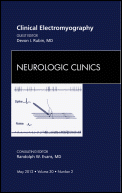
NEUROLOGIC CLINICS
Pioneering insights in the realm of neurology.NEUROLOGIC CLINICS, published by W B SAUNDERS CO-ELSEVIER INC, stands as a leading journal in the field of clinical neurology, boasting an impressive impact factor that reflects its significant contributions to neurological research and clinical practice. With an ISSN of 0733-8619 and E-ISSN of 1557-9875, this journal provides a critical platform for the dissemination of innovative research, case studies, and reviews focusing on various aspects of neurology, from diagnosis to treatment interventions. As part of its commitment to advancing the understanding of neurological disorders, NEUROLOGIC CLINICS is categorized in the Q2 quartile for Neurology (clinical) in 2023, indicating its robust standing within the academic community. It is recognized for its rigorous peer-review process and is indexed in Scopus, ranking #147 out of 400 in its field with a notable 63rd percentile. The journal, which dates back to 1983 and continues to publish vital findings up to 2024, is an invaluable resource for researchers, healthcare professionals, and students dedicated to enhancing their knowledge and clinical skills in neurology. Subscribe now to stay abreast of current advancements and expand your expertise in this dynamic field.
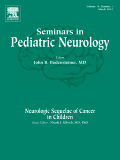
Seminars in Pediatric Neurology
Fostering collaboration between researchers and clinicians.Seminars in Pediatric Neurology, published by W B SAUNDERS CO-ELSEVIER INC, is a prestigious journal dedicated to the evolving field of pediatric neurological disorders. Since its inception in 1994, this peer-reviewed journal has provided critical insights and cutting-edge research to support healthcare professionals in enhancing the quality of care for children with neurological conditions. With an impressive 2023 impact factor and a Q2 ranking in both the clinical neurology and pediatrics categories, it stands as a vital resource, fostering the dissemination of knowledge among researchers and clinicians alike. Featuring articles that explore a range of topics from clinical trials to innovative treatment modalities, this journal empowers practitioners with the latest findings in pediatric neurology. While primarily subscription-based, it plays a key role in bridging the gap between academia and clinical practice, making it an indispensable tool for anyone involved in the care and treatment of pediatric neurological patients.

REVISTA ESPANOLA DE CARDIOLOGIA
Transforming Cardiovascular Research into Real-World ImpactREVISTA ESPANOLA DE CARDIOLOGIA is a premier journal dedicated to the dynamic field of cardiology, published by EDICIONES DOYMA S A in Barcelona, Spain. With an impressive Q1 status in the Medicine (miscellaneous) category for 2023, this journal is recognized for its significant contributions to cardiovascular research, evidenced by its rank of #61 out of 387 in the Scopus database, placing it within the top 16% of journals in its field. Covering a broad range of topics within cardiology, the journal aims to disseminate high-quality research, clinical studies, and educational content, fostering knowledge sharing among researchers, clinicians, and students alike. While it does not currently offer open access, the journal maintains a commitment to advancing cardiovascular health through rigorous peer-reviewed articles. With a publication history that spans from 2013 to 2024, REVISTA ESPANOLA DE CARDIOLOGIA is an essential resource for those seeking to stay at the forefront of cardiology advancements and practices.
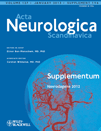
ACTA NEUROLOGICA SCANDINAVICA
Elevating Clinical Knowledge in NeurologyACTA NEUROLOGICA SCANDINAVICA is a prestigious journal published by Wiley that has significantly contributed to the field of neurology and neuroscience since its inception in 1961. With a broad scope encompassing clinical and experimental research, this journal is esteemed for its rigorous peer-review process and high-quality publications. Located in the United Kingdom, it is recognized in the 2023 category quartiles as Q1 in Medicine (miscellaneous) and Q2 in both Neurology and Clinical Neurology, indicating its strong influence and relevance within the medical community. With an H-index demonstrating consistent citation impact, ACTA NEUROLOGICA SCANDINAVICA holds a Scopus rank of #86 out of 400 in Clinical Neurology, reflecting its contribution to advancing current knowledge and practice. Researchers, professionals, and students alike will find in this journal a valuable resource for the latest findings, discussions, and developments in understanding neurological disorders and treatments, furthering educational and clinical endeavors alike.
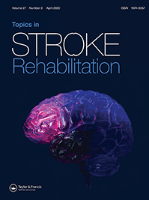
Topics in Stroke Rehabilitation
Transforming care for stroke survivors.Topics in Stroke Rehabilitation, published by Taylor & Francis Ltd, stands as a premier academic journal offering cutting-edge research and insights in the fields of rehabilitation, neurology, and community care. With an impressive impact factor reflecting its strong scholarly influence, this journal not only maintains a distinguished Q1 ranking in Community and Home Care and Rehabilitation but is also recognized in the Q2 category for Clinical Neurology, showcasing its relevance across multiple disciplines. Covering a comprehensive range of topics from neurorehabilitation techniques to patient-centered care strategies, Topics in Stroke Rehabilitation serves as an essential resource for researchers, healthcare professionals, and students dedicated to enhancing the quality of life for individuals recovering from stroke. With an accessible archive dating back to 1996 and continuous publication through 2024, this journal invites collaboration and discourse, fostering advancements in both theoretical knowledge and practical applications within the realm of stroke rehabilitation.